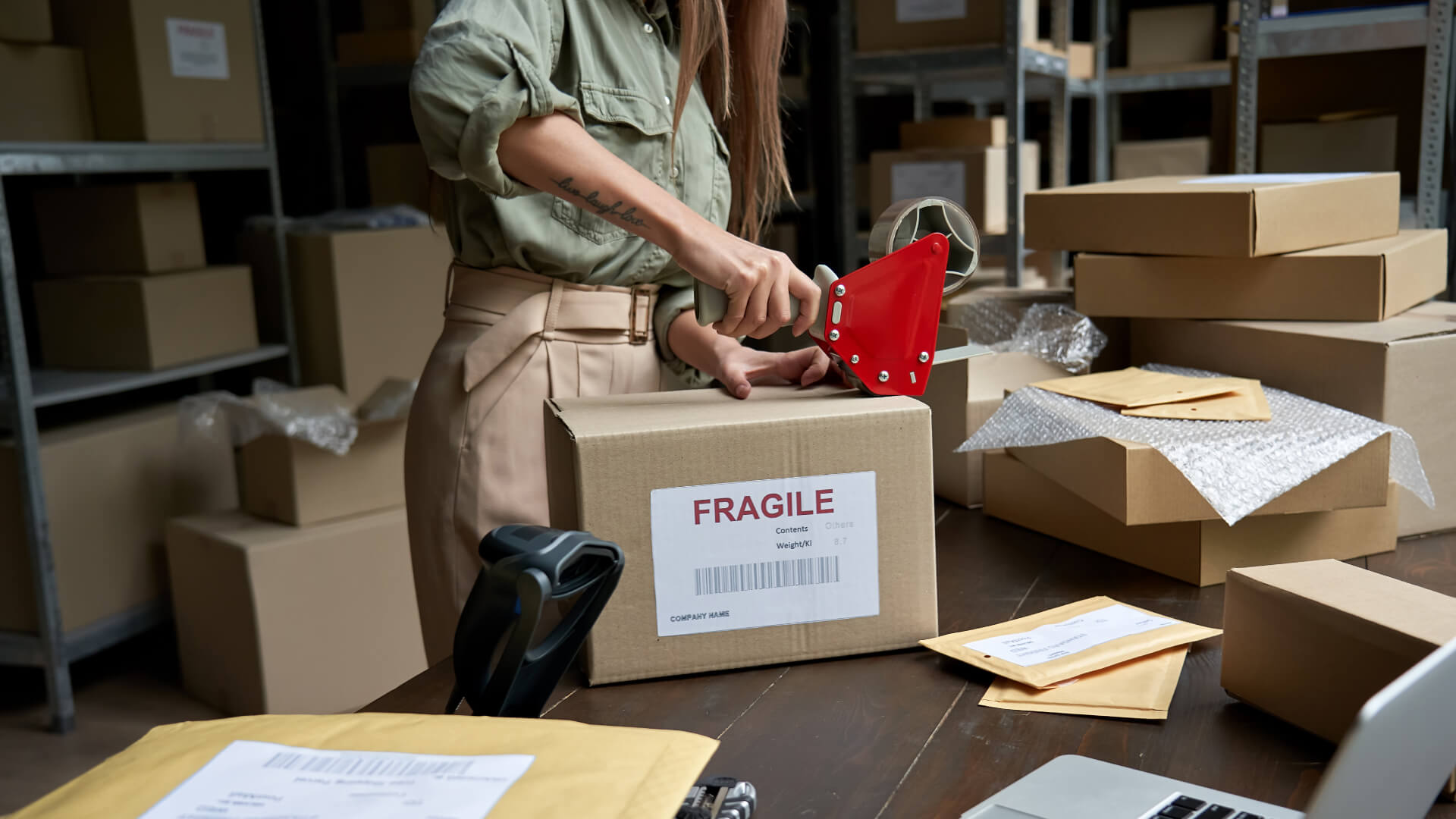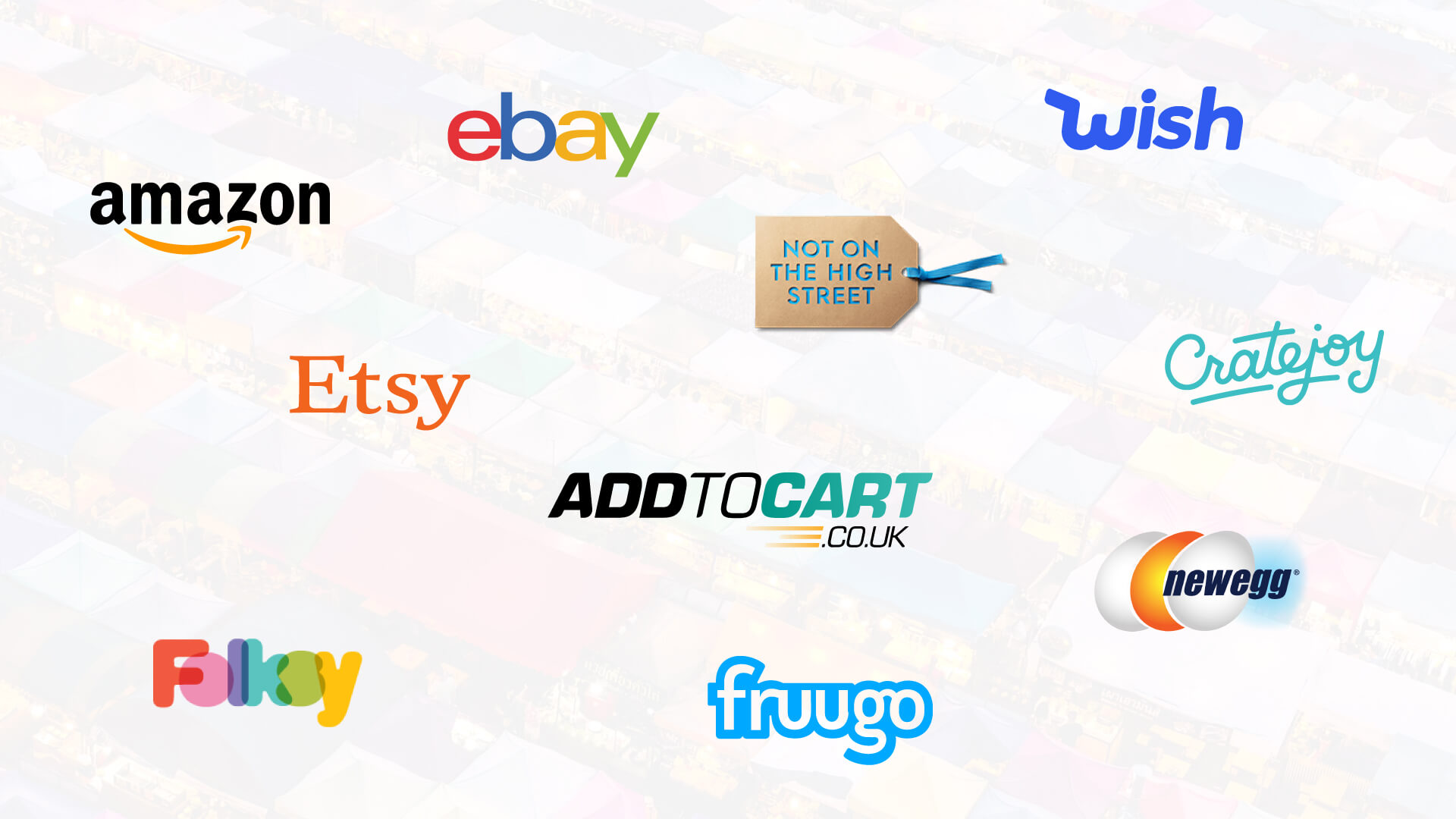What is dropshipping? – Everything you need to know!
For anyone who has ever looked up ways to make a living online, dropshipping will have been one of the most prominent results found. Dropshipping is a model that allows people, like you, to start businesses within minutes selling products manufactured by other companies and never actually held in stock by the company selling them. Put simply, when a buyer purchases an item from your shop, you then buy the product from a third party, who ships it directly to your buyer.
There are many companies online that dedicate themselves to some aspect of dropshipping. For example, Shopify provides an easy-to-create shop front, which they host, for a monthly fee. Through their platform, shops can easily add services that automatically locate and order products, produce a sense of scarcity with timers and alerts, and gather emails for future marketing.
Benefits of Dropshipping
The great thing about dropshipping is that it has a low barrier to entry. Anyone can try it for little or no money. It is easy to trial new product lines without purchasing stock, and it is easily scalable. For entrepreneurs who opt to go the more traditional route of product testing, buying products, and subsequently storing them, there are significantly higher risks to reach the point of starting to make sales.
Despite the simplicity of the dropshipping model, people report that they think it sounds too easy and, therefore, there must be a catch. Others believe that they must be missing a step. Yet, the truth is that dropshipping is incredibly simple. Like any business, you need to keep records of your income and expenses and pay the relevant taxes for your area, but with such a high potential, combined with low financial risk, there is no time like the present to get started.
With that in mind, we have produced the following guide to assist the next crop of successful dropshipping businesses.
How Does Dropshipping work?
Dropshipping is a method of selling items to customers. Customers will place orders via your online shop, and a short while later, their goods are delivered. The process is no different for the customer than if they had purchased from a more prominent, more established brand. For you, the drop shipper, things differ. When you receive the order from the client, you will, in turn, place an order with the manufacturer or wholesaler. They will pick, pack, and post the order to your client. You never handle the product directly.
Because you never own this stock yourself, you remove many areas of business risk. However, you have less control of the fine details, reintroducing some risk in other areas. We cover the pros and cons of drop shipping below.
What Are The Benefits of Dropshipping?
With its low entry costs and ease of setting up, it is straightforward for dropshipping entrepreneurs to trial products, finding out what sells and what does not. Dropshipping can work wonderfully on its own or as an addition to a traditional held-stock retail model. By using dropshipping, it is possible for a small business to avoid risks, such as large purchases of a new stock range, until they have established that they have a winning new product. Here are some of the many reasons that dropshipping is proving to be such a popular model.
1: Low entry costs
As we’ve touched on above, dropshipping has a low entry cost. You do not need to order large quantities of stock. While we always recommend that you purchase each of your planned products at least once, you can launch an online shop without spending a single dollar on stock. Comparatively, most traditional retailers tie up hundreds of thousands of dollars in stock, then pay for warehouse space and staff to hold and manage it all.
With drop shipping, you only pay for stock when the customer has already purchased it from you. It would help if you had some liquidity ready to make the purchase, as it can take a few days for funds to clear into your bank account, depending on which payment platform you opt to use. Still, you only need to spend money on products after the customer has made a payment.
2: Quick and easy set-up
Because drop shippers do not have to hold any stock, running a dropshipping company is very simple. You do not have to employ the same staff that a traditional retailer would need. As we mentioned above, you would not need to source warehouse space or pay for any staff to manage it. Packing and shipping your orders is done by the wholesaler with whom you will have agreements to ensure specific timescales are adhered to. In addition, automation in your email process can allow tracking numbers to be automatically provided to your customers, reducing the amount of customer service staff that you might otherwise require. Order fulfilment and the associated accounting for the orders can also all become automated to a large degree.
3: Low ongoing costs
Because drop shippers do not need to hire many (if any) staff early on or need any warehouse space, the overheads of a dropshipping company are significantly lower than traditional competitors. This applies in terms of both money and time. Many drop shippers are operated on a part-time basis from home by individuals, couples, and partnerships. The main costs associated with dropshipping are platform fees (such as Shopify), payment processor fees (Stripe, Paypal, etc.), and any add-ons that you end up using to automate your business.
4: Add or remove product-lines easily
You can quickly drop a failing product from your range or add alternative or complementary products because you do not have to dedicate yourself to one idea. If your shop is more general than niche, you can quickly jump on new trends and add these to your product offerings.
This makes it easy to test new items and quickly gauge the likelihood of their success.
5: Simple to scale up
With dropshipping, much of the associated work of running your business is done for you by other people. It isn’t free, but it’s included in the pricing you have already agreed to and passed along to your customer. While a held-stock competitor might receive 100 orders and then have to pick, pack, and post the items, one by one (or pay staff to do so). On the other hand, if your drop shipping company received 100 orders and your business is fully automated, you will not need to place these orders with your wholesaler personally. The wholesaler will receive the information, process the order, and post them to your customer while you pocket the profit.
If your business suddenly got twice as busy, it would have little impact on you, whereas the held-stock company would need to find time to manage all that extra work, which may not be possible.
6: Work anywhere
Thanks to the simplicity of dropshipping, you can work anywhere that you can take your laptop and get an internet signal, leaving you free to work from home, a café, or while on holiday.
If you do find the need for staff, even this can be flexible. There are many sites where you can hire a virtual assistant, often referred to as a VA, who can do the basics of your business, such as arranging returns or responding to complaints. As long as you can maintain contact with your customers via email, you can work from anywhere.
What are the Disadvantages of Dropshipping?
Of course, it’s not all upside. If it were, dropshipping wouldn’t be an alternative to the mainstream; it would be the only way things were done. For all of the benefits that make it a very attractive model for newcomers, there are some downsides. It is important to be aware of what these are so that you can form a plan to manage them. Here we cover some of the most important shortcomings of this model.
1: Narrow margins
Tight margins (small profits) are to be expected in dropshipping. Because it is so accessible, dropshipping is highly competitive. Unless you somehow pin down a manufacturer to an exclusive agreement, any product you are selling will also be available elsewhere. Competition means that the cheapest priced version will often be the one that sells, resulting in low margins.
In addition, some sellers will even sell at zero profit on some items to entice new buyers to their site and gain market traction. The main way to avoid this is to either offer top-notch customer service or concentrate on a very narrow niche market.
2: Inventory Problems
When you hold all your own stock, it’s a simple task to know how much of each item you have. If you brought 100 units from your supplier and sold 40, you should have 60 available to sell.
With dropshipping, the same cannot be said. A wholesaler may not disclose their overall stock, but they may be selling to multiple drop shippers even if they do. If you were to run a campaign that does very well, and suddenly you discover your wholesaler has run out of stock, this can do serious reputational damage to your brand.
As we touched on previously, there are many automations you can add to your site. Some of these can monitor stock availability from your wholesaler and update your site to either show zero stock or remove the item entirely if the wholesaler advises they have run out.
3: Shipping issues
Several potential shipping issues can arise from dropshipping. For one thing, dispatch and shipping can be slow, particularly from suppliers in China. Sometimes local holidays can impact dispatch times by several weeks. Be sure to test suppliers and work with only the best and most reliable.
In addition, dropshipping websites often have multiple items from a variety of suppliers. This can result in you, the drop shipping company, being charged multiple shipping fees. While it’s normal to charge your customer a single delivery fee, it may not cover the actual cost, further reducing your margins.
4: Supplier errors and damage
It is a sad fact of dropshipping that sometimes the item that arrives is wrong, faulty, or damaged. When this happens, you will have two choices if you care about your reputation: a refund or a replacement. Either way, you’ll be out of pocket. If you find this keeps happening with a specific supplier, speak to them or find a new source.
Don’t forget to apologise and be polite. It isn’t the customer’s fault, and they deserve to be respected. You also promote the possibility of the customer trying again with you in the future or at least avoiding a scathing online review.
Rest assured, it doesn’t only drop shippers that wrestle with these problems. Check out Trustpilot reviews for any big-name retailer, and you will see the same complaints.
5: Limited customisation and branding
It should be evident by now that the drop shipper has no direct involvement with the product sold. Unlike custom-made products, the wholesaler is shipping ready-to-go items directly to the customer, with little or no opportunity for branding.
What does it cost to start dropshipping?
We’ve already discussed how dropshipping as a model has a low barrier to entry – in other words, low start-up costs. To help quantify that for you, let’s look at the example below.
For example, a hands-free dog-leash that will allow people to exercise their pets while out jogging. You will drop ship this from Aliexpress in China to your target audiences in the USA and UK.
Firstly, you will need a shop face. You can invest thousands in a customised website, or you can get started simply with sites like woo-commerce, or Shopify. We’ll use Shopify for our example.
After a 14 day free trial, Shopify will host your shop for $29 per month (Approx £21). This price will scale up as your sales do but includes the costs of processing payments and providing the service.
-
Shopify Cost: $29 per month (Approx £21)
One of the perks of Shopify is the number of add-on packages there are that will make your life simpler. One such product is Oberlo. Oberlo will allow you to search and directly list products from Aliexpress. If you upgrade to the premium package, Oberlo will take care of the ordering process. This includes placing the order, dispatching the item, and giving the tracking information. This is a godsend!
-
Oberlo Cost: $30 per month. (Approx £22)
While it’s possible to link customers directly to your Shopify page, you’ll probably want to brand yourself! This means finding a name and a matching website. You won’t need to pay for hosting, but you will want to buy a domain name. Where possible, buy a .com.
-
Domain name: $10-20 per year. (Approx £7.5-£15)
You will want to order test products, preferably from more than one supplier. Try to find a supplier that can combine quality products and packaging with fast delivery.
-
Product Test: £Variable.
The most significant step in making a successful and scalable drop shipping business is advertising. You will most likely be targeting potential customers via Facebook ads. We’d recommend a starting budget of around $500 as a minimum. It sounds a lot, but this is what will directly draw customers to your website.
-
Advertising: $500+ per month. (Approx £366+)
Will dropshipping be profitable in 2022?
Dropshipping isn’t perfect, but it has been a robust business model that has made many millionaires. For example, look up the Balinese town of Canggu, which has become a mecca for wealthy dropshipping digital nomads. In fact, the successful drop shippers moving to the town to live the good life! These dedicated co-working spaces have become viable businesses in themselves.
There seems little doubt that drop shipping will continue to be contentious. But for those who take the relatively small risk and jump in, the waters should remain as warm!







